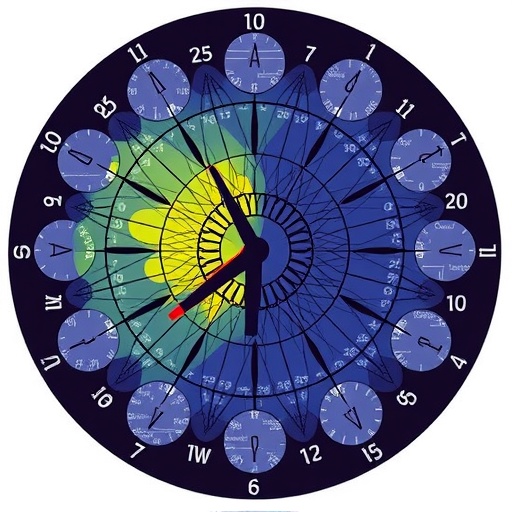Researchers use connectome to reconcile seemingly inconsistent neuroimaging findings
BOSTON – Already affecting more than five million Americans older than 65, Alzheimer’s disease is on the rise and expected to impact more than 13 million people by 2050. Over the last three decades, researchers have relied on neuroimaging – brain scans such as magnetic resonance imaging (MRI) or positron emission tomography (PET) – to study Alzheimer’s disease and other neurodegenerative diseases. Yet these studies have so far failed to deliver consistent findings, leaving scientists with no clear path to finding treatments or cures.
In a study published today in the journal BRAIN, neuroscientists led by Michael D. Fox, MD, PhD, of Beth Israel Deaconess Medical Center (BIDMC) used data from the human brain connectome – a publicly available “wiring diagram” of the human brain based on data from thousands of healthy human volunteers – to reassess the findings from neuroimaging studies of patients with Alzheimer’s disease.
“In neuroimaging, a common assumption is that studies of specific diseases or symptoms should all implicate a specific brain region,” said Fox, director of the Laboratory for Brain Network Imaging and Modulation at BIDMC and an associate professor of neurology at Harvard Medical School. “However, cognitive functions, neuropsychiatric symptoms and diseases may better map to brain networks rather than single brain regions. So we tested the hypothesis that these inconsistent neuroimaging findings are part of one connected brain network.”
Fox and colleagues, including corresponding author, R. Ryan Darby, MD, PhD, formerly a fellow in Fox’s lab at BIDMC and now at Vanderbilt University Medical Center, analyzed results from 26 neuroimaging studies of Alzheimer’s disease. The studies investigated abnormalities in structure, metabolism or circulation of the brains of patients with Alzheimer’s disease; however, the findings were seemingly inconsistent, with studies locating abnormalities in disparate brain regions. No single brain region consistently demonstrated neuroimaging abnormalities. However, when Fox’s team mapped these various neuroimaging abnormalities to the human connectome – the wiring diagram of the human brain – a different picture emerged.
“When we applied this approach to our 26 studies, we found that 100 percent of studies reported neuroimaging abnormalities that were part of the same connected brain network – both within and across imaging modalities,” Fox reported. “These results may help reconcile inconsistent neuroimaging findings as well as improve our ability to link brain symptoms or diseases to neuroanatomy.”
Fox and colleagues have previously used the network mapping technique – pioneered by Fox and others – to reveal which parts of the brain are responsible for a number of symptoms, conditions, behavior and even consciousness. Now the method could pave the way to a deeper understanding of Alzheimer’s and other brain diseases.
The findings also suggest a unique solution to the “reproducibility crisis” in the field of neuroscience. Reproducibility – the potential for different investigators to run the study again and obtain the same results – is one of the main tenants of the scientific method and critical for translating research findings into treatments. In this study, Fox and colleagues use the human connectome to change the way reproducibility is measured.
“This is a new way to combine results across many different studies to determine the brain circuit most tightly associated with a given symptom or disease,” Fox said. “By shifting our focus from specific brain regions to networks, we show that seemingly inconsistent neuroimaging findings are in fact reproducible.”
###
Juho Joutsa of BIDMC’s Berenson-Allen Center for Noninvasive Brain Stimulation and of Massachusetts General Hospital also contributed to this work.
Investigators were supported by funding from the Sidney R. Baer, Jr. Foundation; the National Institutes of Health, (R01 MH113929, K23 NS0837410); the Nancy Lurie Marks Foundation; the Dystonia Medical Research Foundation; the Alzheimer’s Association; the BrightFocus Foundation; the Vanderbilt Faculty Research Scholars Award; Academy of Finland and the Finnish Medical Foundation.
The authors report no competing interests.
About Beth Israel Deaconess Medical Center
Beth Israel Deaconess Medical Center is a patient care, teaching and research affiliate of Harvard Medical School and consistently ranks as a national leader among independent hospitals in National Institutes of Health funding.
BIDMC is in the community with Beth Israel Deaconess Hospital-Milton, Beth Israel Deaconess Hospital-Needham, Beth Israel Deaconess Hospital-Plymouth, Anna Jaques Hospital, Cambridge Health Alliance, Lawrence General Hospital, MetroWest Medical Center, Signature Healthcare, Beth Israel Deaconess HealthCare, Community Care Alliance and Atrius Health. BIDMC is also clinically affiliated with the Joslin Diabetes Center and Hebrew SeniorLife and is a research partner of Dana-Farber/Harvard Cancer Center and the Jackson Laboratory. BIDMC is the official hospital of the Boston Red Sox. For more information, visit http://www.
Media Contact
Jacqueline Mitchell
[email protected]
617-667-7306




